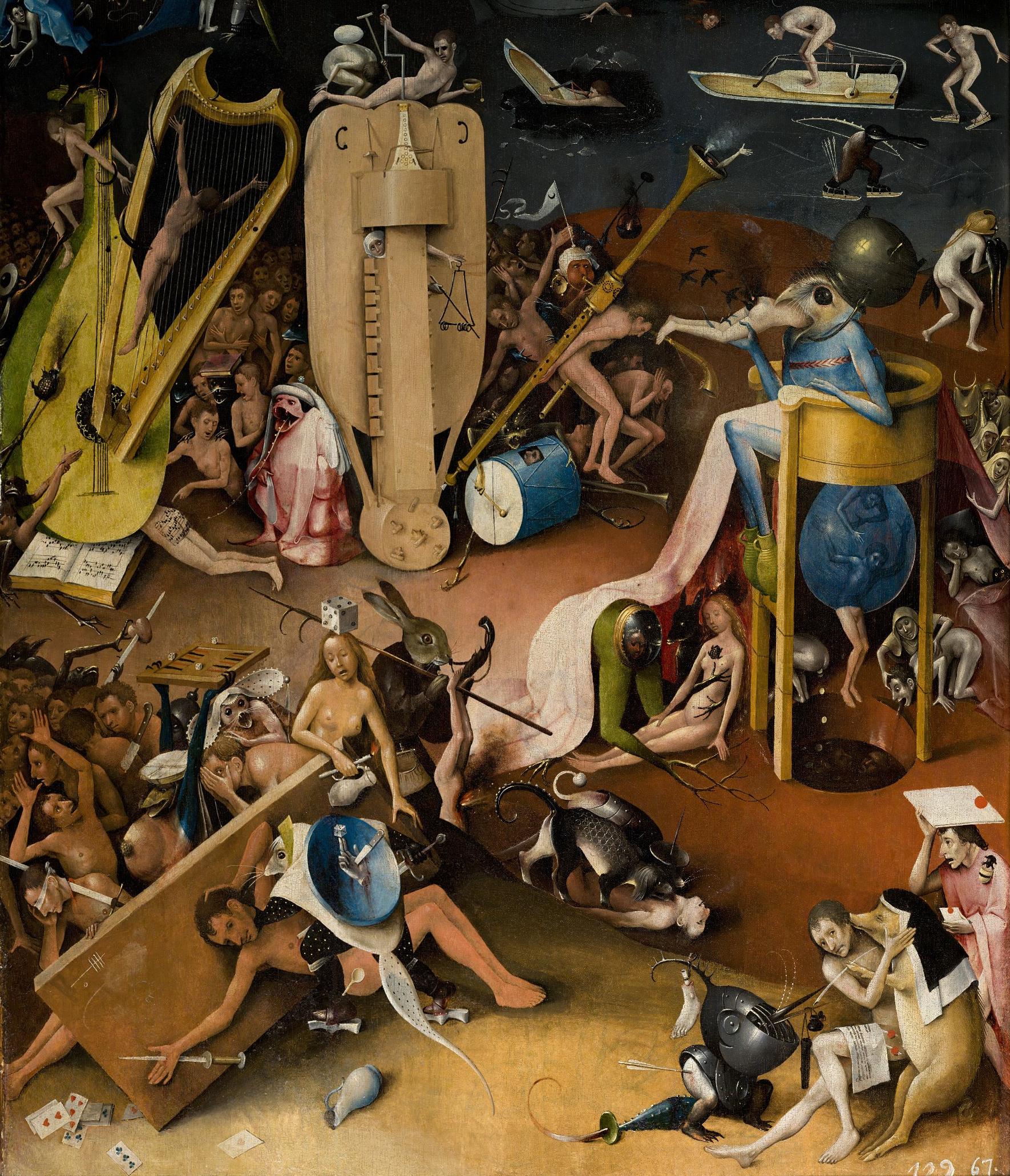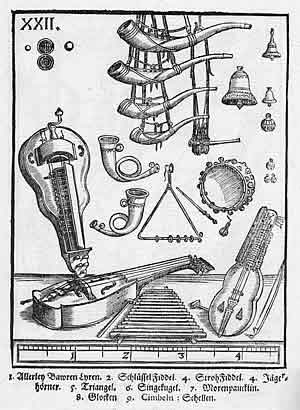|
Hurdy-gurdy
The hurdy-gurdy is a string instrument that produces sound by a hand-turned crank, rosined wheel rubbing against the strings. The wheel functions much like a violin (or nyckelharpa) bow, and single notes played on the instrument sound similar to those of a violin. Melodies are played on a musical keyboard, keyboard that presses ''tangents''—small wedges, typically made of wood or metal—against one or more of the strings to change their pitch. Like most other acoustic stringed instruments, it has a sound board (music), sound board and hollow cavity to make the vibration of the strings audible. Most hurdy-gurdies have multiple drone (music), drone strings, which give a constant pitch accompaniment to the melody, resulting in a sound similar to that of bagpipes. For this reason, the hurdy-gurdy is often used interchangeably or along with bagpipes. It is mostly used in Occitan folk music, Occitan, Music of Aragon, Aragonese, Cajun music, Cajun French, Music of Galicia, Cantabri ... [...More Info...] [...Related Items...] OR: [Wikipedia] [Google] [Baidu] |
Nyckelharpa
''Nyckelharpa'' (, roughly "keyed fiddle" in Swedish language, Swedish, , plural: ) is a "keyed" Bowed string instrument, bowed chordophone, primarily originating from Sweden in its modern form, but with its historical roots scattered across medieval Europe. It is similar in appearance to a fiddle or Violin family, violin but larger (in its earlier forms essentially a modified vielle), which employs key-actuated tangents along the neck to change the pitch during play, much like a hurdy-gurdy. The keys slide under the strings, with the tangents set perpendicularly to the keys, reaching above the strings. Upon key-actuation, the tangent is pressed to meet the corresponding string, much like a fret, shortening its vibrating length to that point, changing the pitch of the string. It is primarily played underarm, suspended from the shoulder using a Sling (firearms), sling, with the bow in the overhanging arm. The origin of the instrument is unknown, but its historical foothold and mod ... [...More Info...] [...Related Items...] OR: [Wikipedia] [Google] [Baidu] |
Fiddles
A fiddle is a bowed string musical instrument, most often a violin or a bass. It is a colloquial term for the violin, used by players in all genres, including classical music. Although in many cases violins and fiddles are essentially synonymous, the style of the music played may determine specific construction differences between fiddles and classical violins. For example, fiddles may optionally be set up with a bridge with a flatter arch to reduce the range of bow-arm motion needed for techniques such as the double shuffle, a form of bariolage involving rapid alternation between pairs of adjacent strings. To produce a ''brighter'' tone than the deep tones of gut or synthetic core strings, fiddlers often use steel strings. The fiddle is part of many traditional ( folk) styles, which are typically aural traditions—taught " by ear" rather than via written music. Fiddling is the act of playing the fiddle, and fiddlers are musicians who play it. Among musical styles, fid ... [...More Info...] [...Related Items...] OR: [Wikipedia] [Google] [Baidu] |
Baroque Music
Baroque music ( or ) refers to the period or dominant style of Classical music, Western classical music composed from about 1600 to 1750. The Baroque style followed the Renaissance music, Renaissance period, and was followed in turn by the Classical period (music), Classical period after a short transition (the Galant music, galant style). The Baroque period is divided into three major phases: early, middle, and late. Overlapping in time, they are conventionally dated from 1580 to 1650, from 1630 to 1700, and from 1680 to 1750. Baroque music forms a major portion of the "Western art music, classical music" Western canon, canon, and continues to be widely studied, performed, and listened to. The term "baroque" comes from the Portuguese word ''barroco'', meaning "baroque pearl, misshapen pearl". Key List of Baroque composers, composers of the Baroque era include Johann Sebastian Bach, Antonio Vivaldi, George Frideric Handel, Georg Philipp Telemann, Domenico Scarlatti, Claudio Monte ... [...More Info...] [...Related Items...] OR: [Wikipedia] [Google] [Baidu] |
Renaissance Music
Renaissance music is traditionally understood to cover European music of the 15th and 16th centuries, later than the Renaissance era as it is understood in other disciplines. Rather than starting from the early 14th-century ''ars nova'', the music of the Trecento, Trecento music was treated by musicology as a coda to medieval music and the new era dated from the rise of triad (music), triadic harmony and the spread of the ''contenance angloise'' style from the British Isles to the Burgundian School. A convenient watershed for its end is the adoption of basso continuo at the beginning of the Baroque music, Baroque period. The period may be roughly subdivided, with an early period corresponding to the career of Guillaume Du Fay (–1474) and the cultivation of cantilena style, a middle dominated by Franco-Flemish School and the four-part textures favored by Johannes Ockeghem (1410s or '20s–1497) and Josquin des Prez (late 1450s–1521), and culminating during the Counter-Reformat ... [...More Info...] [...Related Items...] OR: [Wikipedia] [Google] [Baidu] |
Nyckelharpa
''Nyckelharpa'' (, roughly "keyed fiddle" in Swedish language, Swedish, , plural: ) is a "keyed" Bowed string instrument, bowed chordophone, primarily originating from Sweden in its modern form, but with its historical roots scattered across medieval Europe. It is similar in appearance to a fiddle or Violin family, violin but larger (in its earlier forms essentially a modified vielle), which employs key-actuated tangents along the neck to change the pitch during play, much like a hurdy-gurdy. The keys slide under the strings, with the tangents set perpendicularly to the keys, reaching above the strings. Upon key-actuation, the tangent is pressed to meet the corresponding string, much like a fret, shortening its vibrating length to that point, changing the pitch of the string. It is primarily played underarm, suspended from the shoulder using a Sling (firearms), sling, with the bow in the overhanging arm. The origin of the instrument is unknown, but its historical foothold and mod ... [...More Info...] [...Related Items...] OR: [Wikipedia] [Google] [Baidu] |
Occitan Folk Music
The traditional Occitan music in the Occitan Valleys of Italy, along with the language and religion are a fundamental element of aggregation for the local community. They mostly consist of ballads, mainly in the Occitania, Occitan territories of Piedmont; performed during almost all occasions of celebration in the valleys and are well known even outside the boundaries of Occitan Valleys of Italy. The ruggedness and impervious nature of the valleys has resulted in each valley having kept its own melodies and dances, different steps and patterns from those of adjacent valleys. A few of the instruments traditionally used are the accordion, clarinet, violin, organ (music), organ, as well as the hurdy-gurdy (''vioulo''), the diatonic button accordion (''semitoun'') with ''pinfre'' (various wind instruments) and the harmonica (''ourganin''). Ballads in the valleys Valle Vermenagna: Courenta, Courenta dei coscritti e Balet Valle Maira: Courento dla Rocho Val Varaita: Countradonsa, C ... [...More Info...] [...Related Items...] OR: [Wikipedia] [Google] [Baidu] |
Rebab
''Rebab'' (, ''rabāba'', variously spelled ''rebap'', ''rubob'', ''rebeb'', ''rababa'', ''rabeba'', ''robab'', ''rubab'', ''rebob'', etc) is the name of several related string instruments that independently spread via Islamic trading routes over much of North Africa, Middle East, Central Asia, Southeast Asia, and parts of Europe. The instrument is typically bowed, but is sometimes plucked. It is one of the earliest known bowed instruments, named no later than the 8th century, and is the parent of many bowed and stringed instruments. Variants There are chiefly three main types: A long-necked bowed variety that often has a spike at the bottom to rest on the ground (see first image to the right); thus this is called a spike fiddle in certain areas. Some of the instruments developing from this variant have vestigial spikes. A short-necked double-chested or "boat-shaped" variant; plucked versions like the '' Maghreb rebab'' and the ''kabuli rebab'' (sometimes referred to as ... [...More Info...] [...Related Items...] OR: [Wikipedia] [Google] [Baidu] |
Middle East
The Middle East (term originally coined in English language) is a geopolitical region encompassing the Arabian Peninsula, the Levant, Turkey, Egypt, Iran, and Iraq. The term came into widespread usage by the United Kingdom and western European nations in the early 20th century as a replacement of the term Near East (both were in contrast to the Far East). The term "Middle East" has led to some confusion over its changing definitions. Since the late 20th century, it has been criticized as being too Eurocentrism, Eurocentric. The region includes the vast majority of the territories included in the closely associated definition of West Asia, but without the South Caucasus. It also includes all of Egypt (not just the Sinai Peninsula, Sinai) and all of Turkey (including East Thrace). Most Middle Eastern countries (13 out of 18) are part of the Arab world. The list of Middle Eastern countries by population, most populous countries in the region are Egypt, Turkey, and Iran, whil ... [...More Info...] [...Related Items...] OR: [Wikipedia] [Google] [Baidu] |
Europe
Europe is a continent located entirely in the Northern Hemisphere and mostly in the Eastern Hemisphere. It is bordered by the Arctic Ocean to the north, the Atlantic Ocean to the west, the Mediterranean Sea to the south, and Asia to the east. Europe shares the landmass of Eurasia with Asia, and of Afro-Eurasia with both Africa and Asia. Europe is commonly considered to be Boundaries between the continents#Asia and Europe, separated from Asia by the Drainage divide, watershed of the Ural Mountains, the Ural (river), Ural River, the Caspian Sea, the Greater Caucasus, the Black Sea, and the waterway of the Bosporus, Bosporus Strait. "Europe" (pp. 68–69); "Asia" (pp. 90–91): "A commonly accepted division between Asia and Europe ... is formed by the Ural Mountains, Ural River, Caspian Sea, Caucasus Mountains, and the Black Sea with its outlets, the Bosporus and Dardanelles." Europe covers approx. , or 2% of Earth#Surface, Earth's surface (6.8% of Earth's land area), making it ... [...More Info...] [...Related Items...] OR: [Wikipedia] [Google] [Baidu] |
Medieval Music
Medieval music encompasses the sacred music, sacred and secular music of Western Europe during the Middle Ages, from approximately the 6th to 15th centuries. It is the Dates of classical music eras, first and longest major era of Western classical music and is followed by the Renaissance music; the two eras comprise what musicologists generally term as early music, preceding the common practice period. Following the traditional division of the Middle Ages, medieval music can be divided into #Early medieval music (500–1000), Early (500–1000), #High medieval music (1000–1300), High (1000–1300), and #Late medieval music (1300–1400), Late (1300–1400) medieval music. Medieval music includes liturgical music used for the church, other sacred music, and secular music, secular or non-religious music. Much medieval music is purely vocal music, such as Gregorian chant. Other music used only instruments or both voices and instruments (typically with the instruments accompanime ... [...More Info...] [...Related Items...] OR: [Wikipedia] [Google] [Baidu] |








